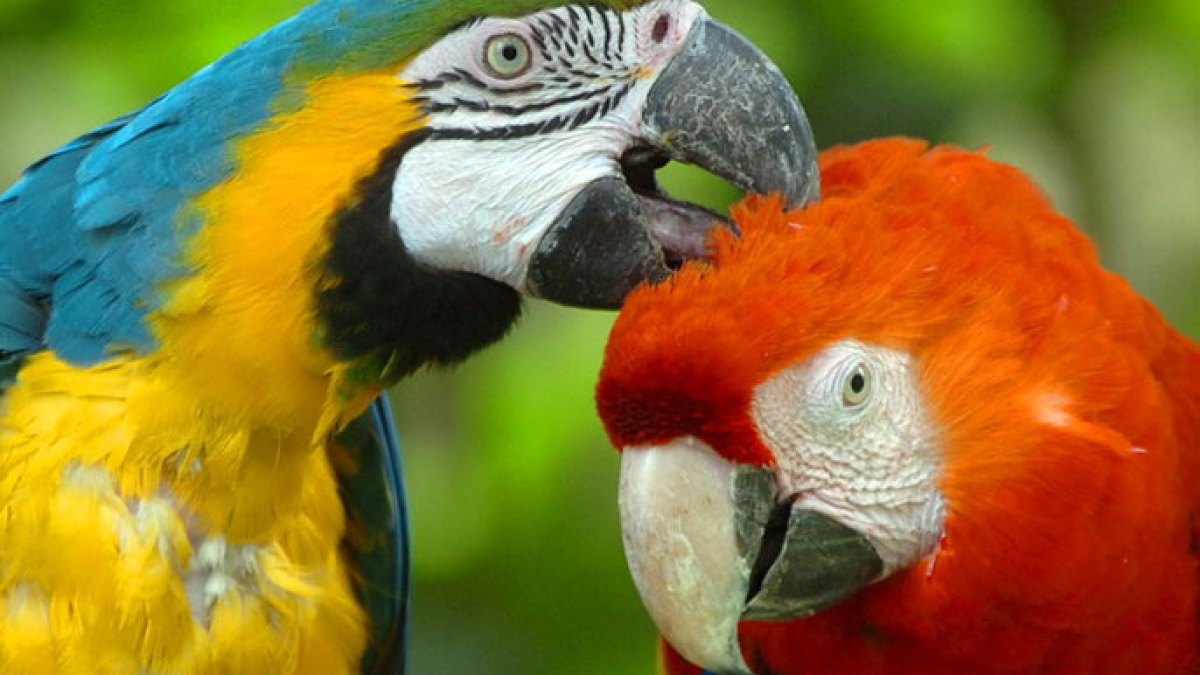Human infection with psittacosis occurs mainly through contact with secretions of infected (European) birds.
European countries recorded 5 deaths from psittacosis, also known as parrot fever. What is this disease?
What are its symptoms?
The World Health Organization said that Austria, Denmark, Germany, Sweden and the Netherlands have reported - through the European Union's Early Warning and Response System (EWRS) - an increase in psittacosis cases in 2023 and at the beginning of 2024, especially from November to December. 1st 2023. 5 deaths were also reported.
The organization added that exposure to wild and/or domestic birds was reported in most cases.
The World Health Organization said that it continues to monitor the situation and, based on available information, assesses the risks posed by this event as low.
What is psittacosis?
Psittacosis is a respiratory infection caused by Chlamydophila psittaci, a bacteria that often infects birds.
Birds may be infected with parrot fever without showing signs of the disease (French)
How does parrot fever infection occur?
Human infection with psittacosis occurs mainly through contact with secretions of infected birds, and is most often associated with those who work with pet birds, poultry workers, veterinarians, pet bird owners, and gardeners in areas where Chlamydia psittacosis is common among domestic birds.
The bacterium Chlamydia psittacosis is associated with more than 450 species of birds, and has also been found in many species of mammals, including dogs, cats, horses, pigs, and reptiles.
However, birds, especially domestic ones (parrots, finches, canaries, and pigeons), are most often involved in causing psittacosis in humans.
Transmission of the disease to humans occurs mainly through inhalation of airborne particles from respiratory secretions, dried feces, or feather dust.
It is not necessary to have direct contact with birds for infection to occur.
The incubation period
Symptoms begin to appear on most infected people within 5 to 14 days after exposure to the bacteria, which is known as the incubation period, during which the person is infected with the bacteria but does not develop symptoms.
Symptoms of parrot fever
People with psittacosis often develop the following:
Headache.
fever.
Goosebumps.
General weakness.
Muscle pain.
Dry cough.
pain in chest.
shortness of breath.
In severe cases, a person with parrot fever may develop the following:
Pneumonia.
Brain inflammation.
Myocarditis.
Psittacosis rarely (less than 1 in 100 cases) leads to death.
Who is at risk of infection with parrot fever?
People most at risk of contracting psittacosis include bird owners and/or keepers, pet store employees, and people whose occupations put them at risk of exposure (e.g. employees at poultry slaughtering and processing plants, veterinarians, veterinary technicians, laboratory workers, workers at avian quarantine stations taxidermists, farmers, wildlife rehabilitators, and zoo workers).
Lawn mowing and gardening have also been linked to psittacosis during the outbreak.
Symptoms of parrot fever in birds
قد تحمل الطيور العدوى بدون ظهور علامات المرض، إلا أن العدوى يمكن أن تكون قاتلة للطيور أيضا. وقد تظهر على الطيور المريضة علامات مثل:
- إسهال.
- ضعف.
- ريش منفوش.
- سوء تغذية.
- سيلان في العينين أو الأنف.
داء الببغائية هو عدوى تنفسية تسببها بكتيريا المتدثرة الببغائية (الألمانية)
نصائح للوقاية من حمى الببغاء
- اشترِ الطيور فقط من متجر حيوانات أليفة أو مربٍّ مرخص.
- اغسل يديك بالصابون والماء الجاري لمدة 10 ثوان قبل وبعد التعامل مع الطيور الأليفة، وفقا لموقع وزارة الصحة في نيو ساوث ويلز في أستراليا.
- تجنب تقبيل الطيور الأليفة (ملامسة الفم للمنقار).
- قم بإيواء الطيور في أقفاص نظيفة ذات حجم كبير، التي تكون مبطنة بورق جرائد يتم تغييره بشكل متكرر.
- لا تسمح للفضلات في الأقفاص بالتراكم أو الجفاف أو الانتشار في الهواء.
- ارتد جهاز تنفس "بي 2" (P2) والقفازات.
- قم بترطيب فضلات أو أقفاص الطيور قبل تنظيف الصندوق.
- اغسل يديك بعد تنظيف القفص. خذ الطيور المريضة إلى الطبيب البيطري في أسرع وقت ممكن.
وقناع التنفس "بي 2" هو نوع من الأقنعة التي تمنع الجزيئات الصغيرة جدا التي تصنعها الآلات والحرارة. وهذا ما يجعلها شائعة لأنها جيدة في إيقاف حوالي 94% من جميع الجزيئات الصغيرة الموجودة في الهواء.
تستخدم هذه الأقنعة أيضا في أماكن مثل المستشفيات للحماية من الفيروسات والجراثيم الضارة الأخرى الموجودة في الهواء.
علاج حمى الببغاء
يتم علاج داء الببغائية بالمضادات الحيوية لمدة تصل إلى أسبوعين.
المصدر : الجزيرة + منظمة الصحة العالمية + مواقع إلكترونية

